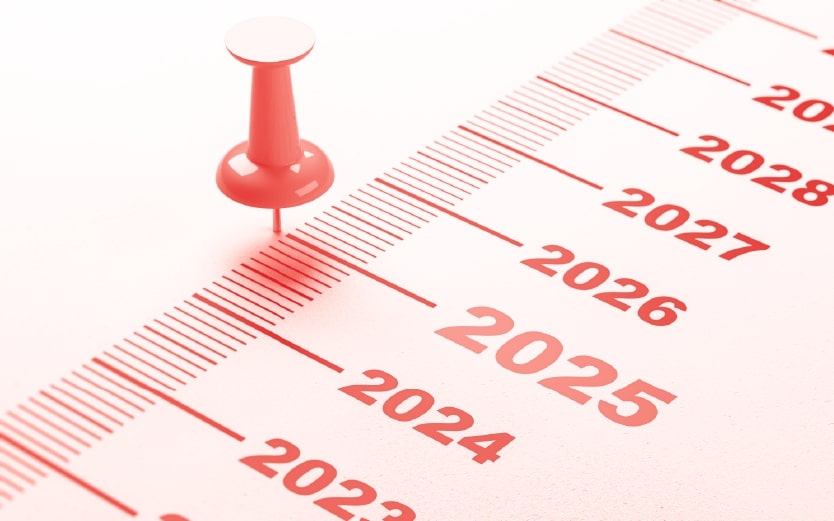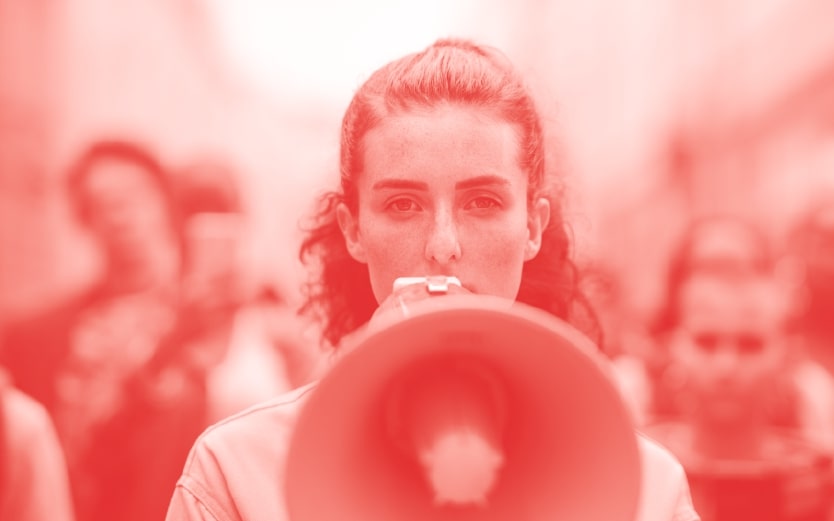Method
-

We Survey Students
We seek to understand the student experience. This year over 68,000 students at 257 schools shared their experiences with and attitudes towards free speech on campus.
-

We Analyze Policies
We rate written policies that regulate student expression. And we track adoptions of the Chicago Statement and institutional neutrality.
-

We Track Controversies
We track free speech controversies, their outcomes, and how schools respond to these incidents.
-

We Add It Up
We give each school an overall score based on survey results, policies, and incidents. These scores update yearly to reflect the shifting free speech climate on campuses.
To ensure full transparency, the following methods were pre-registered on Open Science Framework (OSF) prior to receiving or analyzing any data from the 2026 CFSR. Pre-registration is a widely recognized scientific practice that helps prevent bias, safeguards against ad hoc methodological decisions, and reinforces the credibility and reproducibility of results.
The Data
Where does the survey data come from?
The College Free Speech Rankings Survey was developed by FIRE and administered by College Pulse. No donors to the project took part in designing or conducting the survey. The survey was fielded from Jan. 3 through June 5, 2025. These data come from a sample of 68,510 undergraduates who were then enrolled full-time in four-year degree programs at one of 257 colleges and universities in the United States. The margin of error for the U.S. undergraduate population is +/- 0.4 of a percentage point, while the margin of errors for college student sub-demographics ranges from 2 to 5 percentage points.
How were the students recruited?
The sample was drawn from College Pulse's American Student Panel™, which includes more than 1,000,000 verified undergraduate students and recent alumni from schools within a range of more than 1,500 two- and four-year colleges and universities in all 50 states. The panel includes students attending large public universities, small private colleges, online universities, historically black colleges such as Howard University, women's colleges such as Smith College, and religiously affiliated colleges such as Brigham Young University. Panel members were recruited by a number of methods to help ensure student diversity in the panel population. These methods include web advertising, permission-based email campaigns, and partnerships with university-affiliated organizations.
How does College Pulse ensure response quality?
College Pulse uses a multi-stage validation process to ensure that all its surveys include only students currently enrolled in two- or four-year colleges or universities. Students are required to provide an “.edu” institutional email address, verify a long-term U.S. mobile phone number, and use a unique device to join the panel; in-addition, for this survey, had to acknowledge that they are currently enrolled full-time in a four-year degree program. For more information about how College Pulse prevents fraudulent activity and ensures data integrity, contact methodology@collegepulse.com or visit: https://collegepulse.com/methodology.
How does College Pulse ensure its surveys reflect the views of college students nationally?
To produce representative results, College Pulse applies two post-stratification adjustments based on demographic distributions from the Current Population Survey (CPS), the National Postsecondary Student Aid Study (NPSAS), and the Integrated Postsecondary Education Data System (IPEDS).
- The “weight” produces a representative sample of four-year undergraduate students in the United States.
- The “school weight” produces a representative sample of students at each individual school.
College Pulse rebalances the sample based on a number of important benchmark attributes, such as race, gender, class year, voter registration status, and financial aid status. The sample weighting is accomplished using an iterative proportional fitting (IFP) process that simultaneously balances the distributions of all variables.
All weights are trimmed to prevent individual interviews from having too much influence on the final results and to ensure over-sampled population groups do not completely lose their voice.
The use of these weights in statistical analysis ensures that the demographic characteristics of the sample closely approximate the demographic characteristics of the target populations. Even with these adjustments, surveys may be subject to error or bias due to question wording, context, and order effects.
For further information, please check out College Pulse's methodology.
Where does the policy data come from?
The Spotlight rating measures the extent to which their written regulations on student expression restrict free speech. FIRE rates nearly 500 of the nation's top colleges and universities.
A "red light" institution maintains at least one policy that both clearly and substantially restricts freedom of speech or bars public access to its speech-related policies by requiring a university login and password for access.
A "yellow light" institution maintains policies that could too easily be applied to suppress protected speech or maintains policies that, while clearly restricting freedom of speech, restrict relatively narrow categories of speech.
If FIRE finds that a university's written policies do not seriously threaten student expression, we award it a "green light" rating.
When a private university clearly and consistently states that it holds a certain set of values above a commitment to freedom of speech, FIRE gives it a “Warning” rating to alert prospective students and faculty members to this fact. This assessment is based solely on a school's written regulations and does not take into account its climate for free speech.
In addition, FIRE tracks both institutions or faculty bodies that have adopted or endorsed the Chicago Statement or a substantially similar statement, and institutions that have adopted an official position of institutional neutrality substantially similar to the principles set forth in the University of Chicago's Kalven Report.
Where does the controversy data come from?
Controversy data are tracked through our Scholars Under Fire, Students Under Fire, and Campus Deplatforming databases. These data are initially collected through a combination of case submissions submitted directly to FIRE, automatic keyword-based news alerts for publications and social media, and manual scouring of national, local, and campus news sources. These collection systems grew out of FIRE's decades of campus advocacy work and also serve the purpose of finding students and faculty who may need our help to fight rights violations.
The data as collected by these systems are over-inclusive for our databases, so they are then examined by both FIRE research staff and attorneys for whether they meet the inclusion criteria for FIRE's databases. Of the incidents that meet criteria for database inclusion, incidents at schools that are ranked in our rankings are then examined for whether they meet the criteria (explained below) to be included in rankings calculations.
Download the Data
Want to dig into the survey data? Download the deidentified survey data by campus, state, or year.
Full Download
Campus Download
State Download
Historical Download
Calculating the College Free Speech Rankings
The College Free Speech Rankings are based on a composite score of 12 components. Six components assess student perceptions of different aspects of the speech climate on their campus. Three components assess campus speech policies. And three assess behavior by administrators, faculty, and students during a speech controversy on campus. Higher scores indicate a better campus climate for free speech and expression.
Student Perceptions
Using the College Free Speech Rankings Survey, we group questions into six components. We code responses so that higher scores indicate a better free speech environment. We sum each student's answers to the questions in each component. We then calculate the school weighted mean of each component and then scale the means (e.g. Y = ((X - Xmin) / Xrange) * (Ymax - Ymin) + Ymin) so that the highest hypothetical score from the student perception components is 100 points. The components are listed and described below.
- Comfort Expressing Ideas: We asked students how comfortable they feel expressing their views on controversial topics in five different campus settings (e.g., “in class,” or “in the dining hall”). The four-point scale ranges from “Very uncomfortable” to “Very comfortable” and is coded so that higher scores indicate greater comfort expressing ideas. We scaled the means so that the maximum possible score is 15 and the minimum is 5.
- Self-Censorship: We provided students with a definition of self-censorship and then asked how often they self-censored in three different settings on campus (e.g., “in a classroom discussion”). The five-point scale ranges from “Very often, nearly every day” to “Never” and is coded so that higher scores indicate self-censoring less often. We scaled the means so that the maximum score is 20 and the minimum is 3.
- Disruptive Conduct: We asked students how acceptable it is to engage in three different methods of disruptive protest against a campus speaker, including “shouting down a speaker or trying to prevent them from speaking on campus,” “blocking other students from attending a campus speech,” and “using violence to stop a campus speech.” The four-point scale ranges from “Always acceptable” to “Never acceptable” and is coded so that higher scores indicate less acceptance of disruptive conduct. We scaled the means so that the maximum score is 20 and the minimum is 3.
- Administrative Support: We asked students how clear it is their administration protects free speech on campus. The five-point scale ranges from “Not at all clear” to “Extremely clear” with higher scores indicating greater clarity. We also asked how likely the administration would be to defend a speaker's right to express their views if a controversy over speech occurred on campus. The five-point scale ranges from “Not at all likely” to “Extremely likely” with higher scores indicating a greater likelihood of defending a speaker's rights. We scaled the means so that the maximum score is 20 and the minimum is 2.
- Openness: We asked students which of 20 issues (e.g., “abortion,” “freedom of speech,” “gun control,” and “racial inequality”), if any, are difficult to have open conversations about on campus. Responses are coded 0 if they are difficult and 1 if not selected so that higher scores indicate fewer issues being selected. We scaled the means so that the maximum score is 10 and the minimum is 0.
- Political Tolerance:We asked students whether three speakers espousing views potentially offensive to conservatives (e.g., “The police are just as racist as the Ku Klux Klan.”) and whether three speakers espousing views potentially offensive to liberals (e.g., “Black Lives Matter is a hate group”) should be allowed on campus, regardless of whether they personally agree with the speaker's message. The four-point scale ranges from “Definitely should not allow this speaker” to “Definitely should allow this speaker” and are coded so that higher scores indicate more tolerance of the speaker (i.e., more support for allowing the speaker on campus).
Note we sum, mean, and scale the responses to the conservative speakers and liberal speakers separately, creating measures of Tolerance for Liberal Speakers and Tolerance for Conservative Speakers. We scaled the means so that the maximum score is 15 and the minimum is 3. To obtain Political Tolerance, we take the average of these two measures and subtract the absolute value of the difference between these two measures.
Campus Speech Policies
The College Free Speech Rankings include three campus speech policy components, as described below.
- Chicago Statement: Schools can earn three points for having adopted or endorsed the Chicago Statement or a substantially similar statement. Such adoption reflects an explicit support for free expression.
- Institutional Neutrality: Schools can earn three points for having adopted an official position of institutional neutrality substantially similar to the principles set forth in the University of Chicago's Kalven Report. By adopting a position to take no position on social and political issues unless those issues “threaten the very mission of the university and its values of free inquiry,” schools leave these discussions to students and faculty.
- Spotlight Rating: FIRE's Spotlight Database rates policies that regulate student expression. Schools can earn five points for a “green light” rating or maintaining no policies that seriously threaten speech. On the other hand, schools can lose five to 10 points if their speech policies receive either a “red light” (-10 points) or “yellow light” (-5 points) rating from FIRE. A “red light” rating indicates that the institution has at least one policy that both clearly and substantially restricts freedom of speech. A “yellow light” rating indicates that an institution maintains at least one policy that places a clear restriction on a more limited amount of protected expression, or one that, by virtue of vague wording, could too easily be used to restrict protected expression. 1
Speech Controversies
The College Free Speech Rankings also factor in known outcomes of speech controversies on campus. Speech controversies are broken down into three components that are listed and described below.
- Campus Deplatformings: FIRE's Campus Deplatforming Database tracks attempts to prevent some form of expression from occurring, including efforts to disinvite speakers from campus, to cancel performances of concerts, plays, or the screenings of movies, or to have controversial artwork removed from public display.
- Scholars Under Fire: FIRE's Scholars Under Fire Database tracks calls to punish faculty for protected speech or academic freedom and the outcomes of those speech controversies.
- Students Under Fire: FIRE's Students Under Fire Database tracks calls to punish students or student groups for protected speech and the outcomes of those speech controversies.
During a speech controversy a school can receive a bonus (up to two points) and/or penalty (up to -5 points). A bonus is awarded for making an honor roll statement, a clear statement in support of free speech during a speech controversy in which there are calls to cancel a campus event (e.g., an invited speaker giving a talk; a play performance) or sanction a student or scholar. A penalty is applied when free speech is restricted in response to a controversy.
A bonus of two points is awarded when a school issues a “high honors” statement that reacts appropriately to the incident listed by both unambiguously expressing a commitment to free speech and explaining why the school is committed to freedom of expression. There cannot be any contradictory statements by other officials or any form of punishment for the speech in question, i.e. no investigation, censorship, or sanction by the administration. 2
A one-point bonus is awarded when a school issues an “honors” statement reacting to a speech controversy in support of free expression but without an explanation of why free speech is important 3. An "honors" designation also applies if a top official admonishes a lower official or school employee for not respecting free speech.
The points for penalties are determined based on the censoring outcome of the speech controversy. Table 1 details the points by outcome and component.
Bonuses and penalties are set to decay by one point each subsequent calendar year. For example, the termination of a tenured faculty member in 2022 would cost a school two points in 2025 and a canceled campus speaker from 2024 would cost a school one point in 2025, whereas a “high honors” statement in the face of calls to cancel a campus speaker in 2025 would result in two bonus points in 2025.
To be included in this year's rankings, a speech controversy needed to be recorded and fully assessed by FIRE's research and legal staff (who determine whether an incident warranted inclusion) by June 1, 2025.
| FIRE Database | Outcomes | Penalty |
|---|---|---|
| Campus Deplatforming | Event postponed Speaker/performer/artist withdrew |
-1 |
| Campus Deplatforming | Attempted disruption of an event | -2 |
| Campus Deplatforming |
Performance or art exhibit canceled Speaker/performance/artwork rejected Artwork removed Speaker's invitation revoked Substantial event disruption |
-3 |
| Campus Deplatforming | Substantial event disruption with physical violence and/or vandalism | -5 |
| Scholars Under Fire | Scholar is: censored, demoted, investigated, suspended, required to undergo training, or resigns. | -1 |
| Scholars Under Fire | Untenured faculty member is terminated | -3 |
| Scholars Under Fire | Tenured faculty member is terminated | -5 |
| Students Under Fire | Student or student group is: Sanctioned by student government; censored; investigated; or required to do training | -1 |
| Students Under Fire | Student employee is terminated from campus job | -2 |
| Students Under Fire | Student is expelled or has their acceptance revoked | -3 |
| Students Under Fire | Student group's recognition is denied or rescinded | -3 |
Overall Score
To create an overall score for each college we summed the 12 components. Thus, the formula for the overall score is:
Overall score = “Comfort Expressing Ideas” + “Self-Censorship” + “Disruptive Conduct” + “Administrative Support” + “Openness” + “Political Tolerance” + “Chicago Statement” + “Institutional Neutrality” + “Spotlight Rating” + “Campus Deplatforming” + “Scholars under Fire” + ”Students Under Fire”
| Component | Minimum Value | Maximum Value |
|---|---|---|
| Comfort Expressing Ideas | 5 | 15 |
| Self-Censorship | 3 | 20 |
| Disruptive Conduct | 3 | 20 |
| Administrative Support | 2 | 20 |
| Openness | 0 | 10 |
| Political Tolerance | 3 | 15 |
| Chicago Statement | 0 | 3 |
| Institutional Neutrality | 0 | 3 |
| Spotlight Rating | -10 | 5 |
| Overall score | 6 + bonuses & penalties from controversies | 111 + bonuses & penalties from controversies |
The Team
About FIRE

The Foundation for Individual Rights and Expression is a nonpartisan, nonprofit organization dedicated to defending and sustaining the individual rights of all Americans to free speech and free thought. These rights include freedom of speech, freedom of association, due process, legal equality, religious liberty, and sanctity of conscience — the most essential qualities of liberty. FIRE also recognizes that colleges and universities play a vital role in preserving free thought within a free society. To this end, we place a special emphasis on defending these rights of students and faculty members on our nation's campuses.
About College Pulse

College Pulse is a survey research and analytics company dedicated to understanding the attitudes, preferences and behaviors of today's college students. College Pulse delivers custom data-driven marketing and research solutions, utilizing its unique American College Student Panel™ that includes over 1,00,000 college students and recent alumni from more than 1,500 two- and four-year colleges and universities in all 50 states. For more information, visit https://collegepulse.com/ or College Pulse's X account @CollegeInsights.
The Schools
The following 257 colleges were chosen to represent a variety of colleges in the United States, including large public universities, small private colleges, religiously-affiliated colleges such as Brigham Young University, and Ivy League colleges. Unless otherwise noted, the undergraduates surveyed are from the flagship campus.
| Institution | Number of Undergraduates Sampled |
|---|---|
| American University | 170 |
| Amherst College | 181 |
| Appalachian State University | 315 |
| Arizona State University | 305 |
| Arkansas State University | 157 |
| Auburn University | 341 |
| Bard College | 135 |
Reach out to FIRE
FIRE wants to hear from you. Click here, and we'll make sure your message gets to the right person.
Endnotes
- The Spotlight database also includes “warning” schools that do not promise free speech rights. These schools are excluded from the College Free Speech Rankings.
- Examples: "We support free expression at this institution because doing so is essential to higher education" and /or "because it is part of helping students become well rounded adults" and/or "because we live in a free society." The "because" part is a necessary condition for a "High Honors" designation.
- i.e. the "because" part necessary for “high honors” is missing. Examples: "This school supports free speech" [no "because"]; "Security should not have asked a student to put away his 'offensive' sign." "The dean should not have cancelled the event. We have reinvited the speaker."
FIRE Fights For Your Rights
The Foundation for Individual Rights and Expression defends and promotes free speech and thought as essential liberties. It educates the public, fosters a culture of respect for these rights, and provides tools to protect them.


